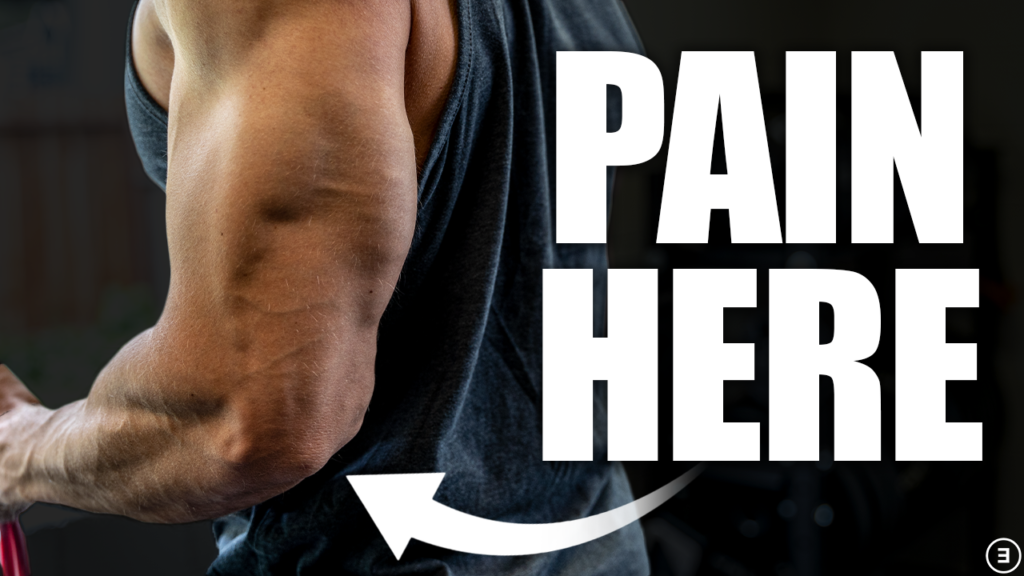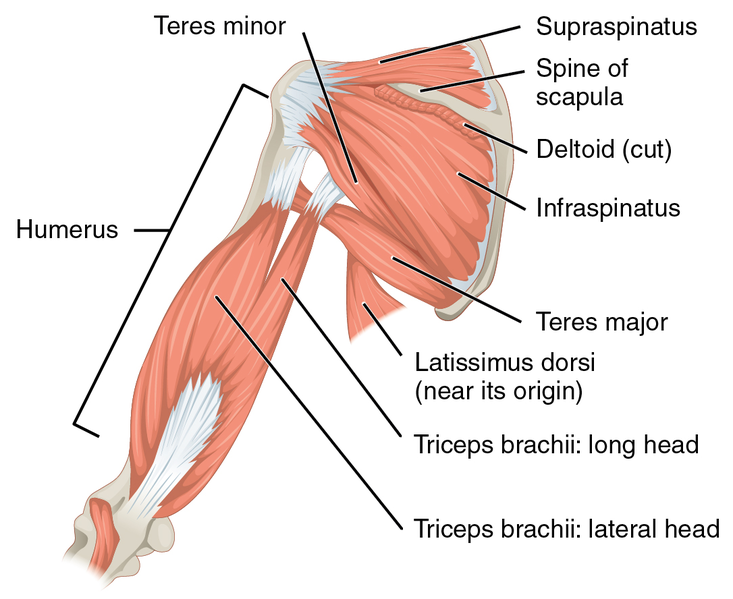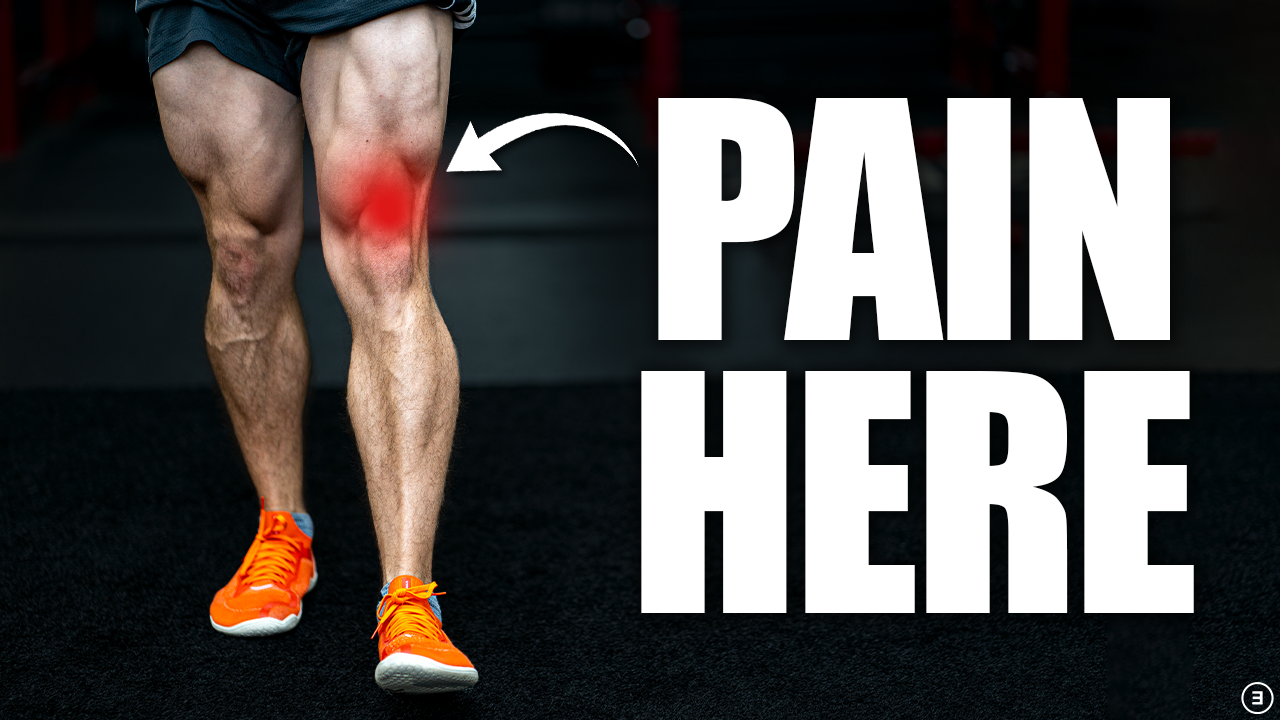The purpose of this blog is to discuss a comprehensive rehab plan for triceps tendinopathy. There is limited literature to pull from so this is a theoretical framework based on the anatomy and function of the triceps brachii, biomechanics, and what is known about other tendinopathies.
Looking for rehab or performance programs? Check out our store here!
Anatomy & Function
The triceps brachii is a three-headed muscle (hence the prefix “tri”) that’s visible on the back of the arm. The medial (not shown) and lateral heads originate on the humerus, while the long head actually attaches up at the shoulder blade. All three muscles insert on the olecranon of the ulna via a common tendon and act to extend, or straighten, the elbow. The long head also extends and stabilizes the shoulder due to its attachment up at the scapula.
Diagnosis
Although the diagnosis is often referred to as triceps tendinitis, triceps tendinopathy is probably a better descriptor for this condition because inflammation likely isn’t the primary driving factor. Instead, you can think about it as an overload of the tendon – meaning that you probably just did a little bit more than what it could handle over a certain period of time.
This is not to be confused with “golfer’s elbow” on the inside of the elbow, “tennis elbow” on the outside of the elbow, or anything to do with instability, trauma, significant swelling, or numbness and tingling.
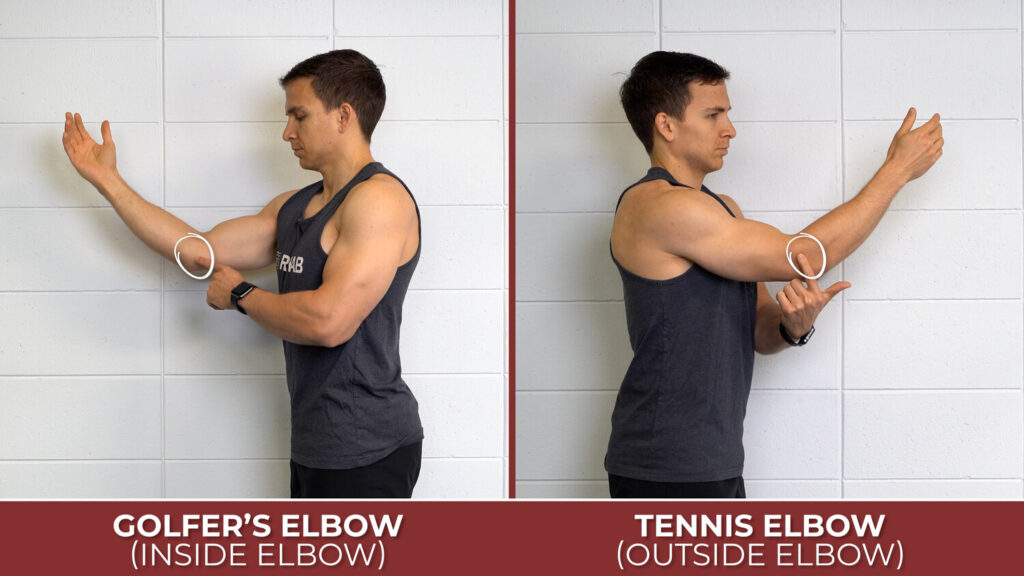
I would expect fairly localized pain in the back of the elbow that worsens with increasing demands on the triceps. For example, I would expect a 40lb dumbbell skull crusher to cause more issues than a 20lb dumbbell skull crusher because it’s a greater load. Similarly, a very fast repetition would likely present more challenges than a very slow repetition because tendons are also affected by the rate, or speed, of loading.
Triceps tendinopathy doesn’t mean that you have to discontinue all training. Instead, you have to find a level of training that allows you to have tolerable symptoms, somewhere around a 3/10 pain or less, while making objective progress in your lifts. Symptoms for tendinopathies can often take 3 or more months to resolve so the focus should be on improving function over the long-term.
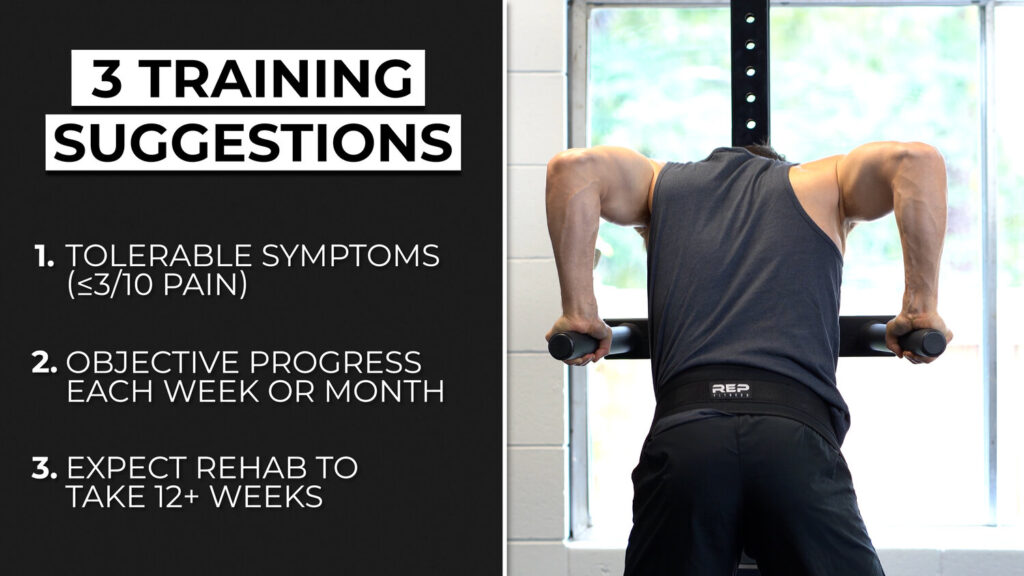
Load Management
The most important concept to understand during the rehabilitation of any tendinopathy is load management. Essentially, you’re attempting to achieve a Goldilocks principle level of load – not too much where you’re exacerbating symptoms and prolonging recovery, but not too little where you’re deconditioning and not driving beneficial adaptations.
Start with the big picture. Has your training changed significantly in the past 3 months that may have contributed to symptoms? Did you alter frequency, volume, and/or intensity?

Analyze your current program to see if there’s any reasonable modifications you can make based on fluctuations in these variables over the past few weeks or months.
Compound Exercises for Triceps Tendinopathy
The next things you’re going to look at are exercise selection, technique, and tempo as they relate to your compound, multi-joint exercises (assuming they’re part of your normal routine). The three main pushing movements that target the triceps include a vertical press where your arms end up overhead, a horizontal press where your arms end up straight out in front of you, and a dip where your arms end up down at your side.
The easiest thing to start with here is finding exercise variations that are the most comfortable for you. For example, an overhead press can be done with a barbell, dumbbells, kettlebells, or unilaterally.
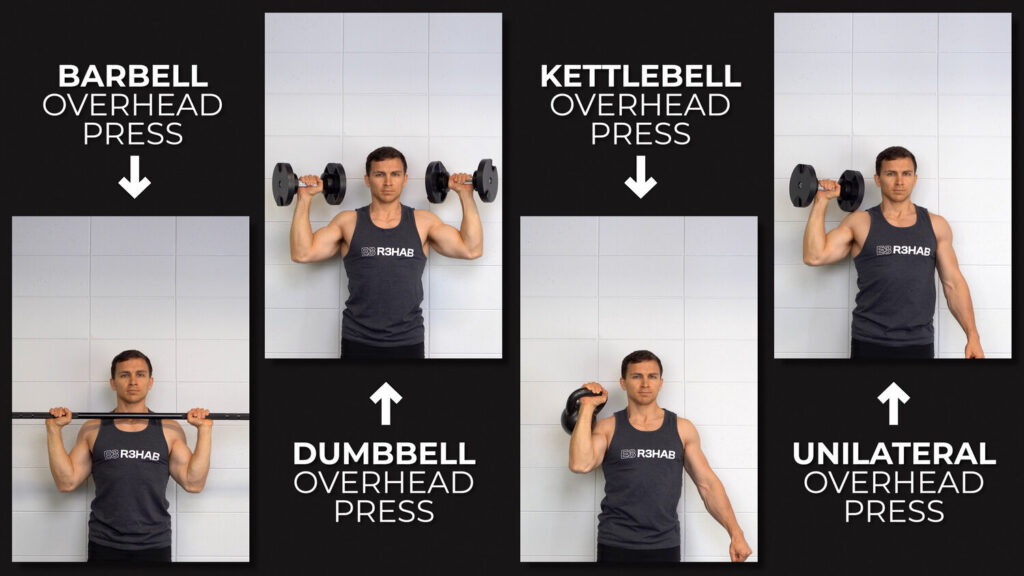
Horizontal pressing can include any type of push up, bench press, dumbbell press, machine press, or even incline options.
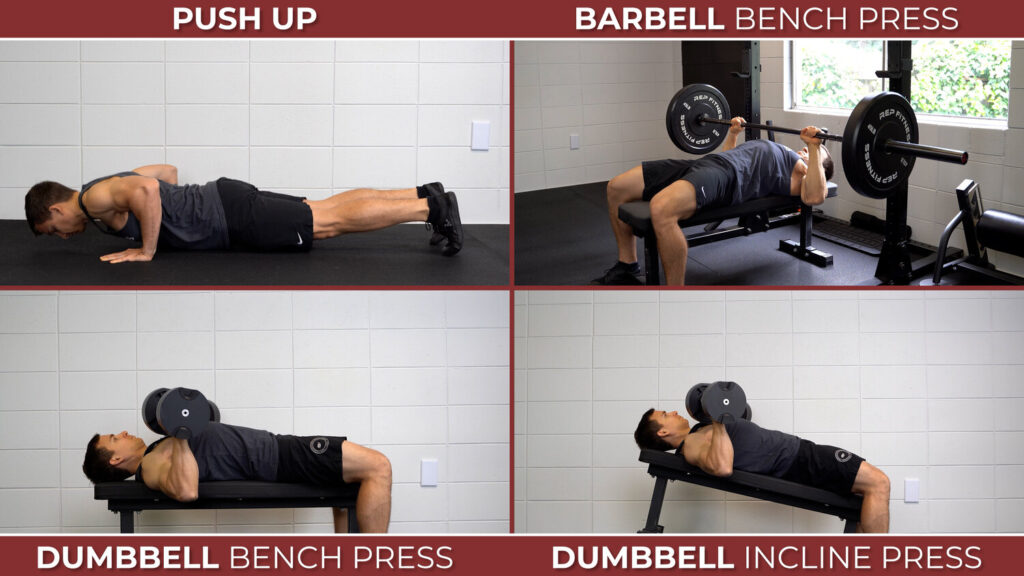
If your symptoms are exactly the same regardless of the movement, you can try to modify your technique to reduce the demand on your triceps. For example, a wider pushup or bench press will likely challenge the triceps less than a very narrow push up or bench press.
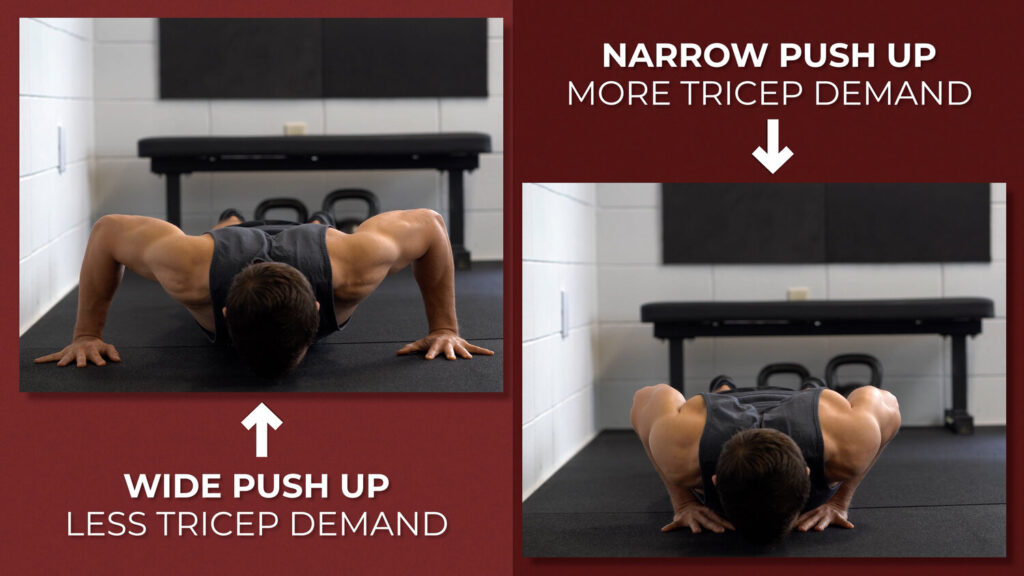
For an overhead press, you can shorten the range of motion. Bringing the bar all the way down where your elbows are maximally flexed will place more load on the triceps than if you limit the movement to about 90 degrees of elbow flexion.
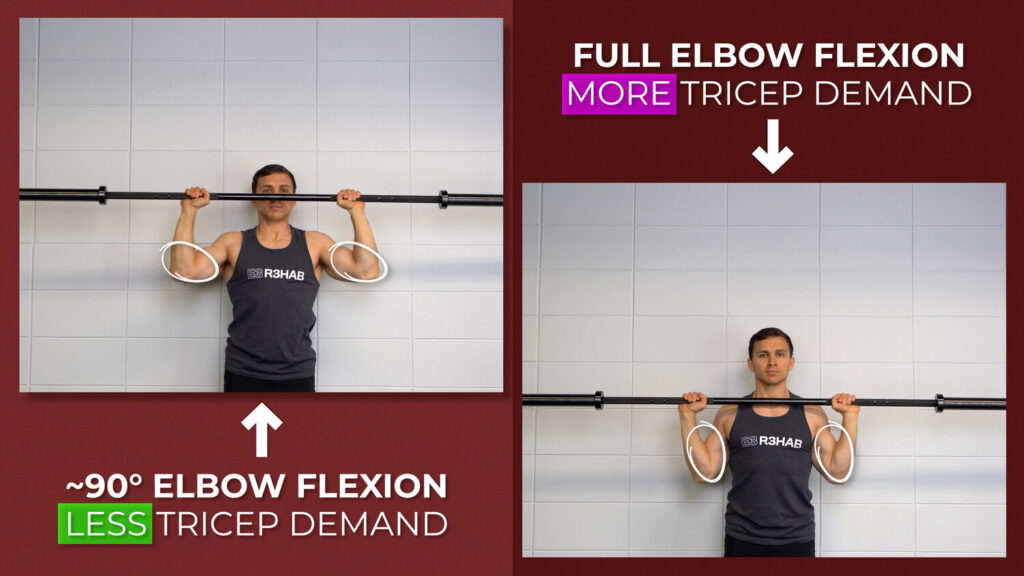
Finally, you can alter the tempo. A lot of tendinopathy protocols implement a 3s eccentric, 1s pause, and 3s concentric. These aren’t inherently special numbers, but decreasing the speed of the movements can be helpful as mentioned earlier. Also, it’ll force you to use a lighter load and the consistent tempo can help with maintaining technique and tracking objective progress.
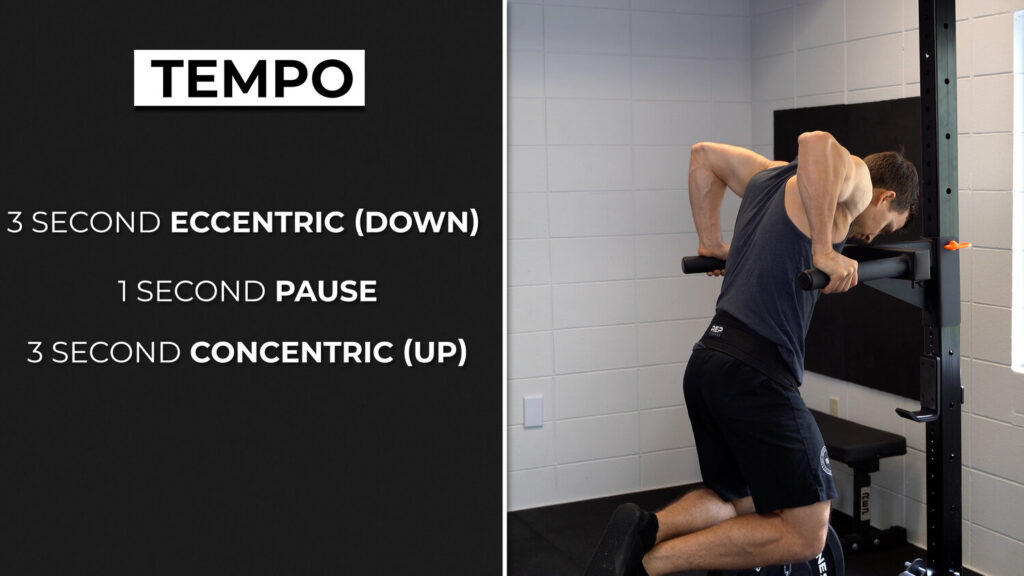
Isolation Exercises for Triceps Tendinopathy
Next up – examining single-joint, isolation exercises. There are four main types for the triceps – elbow extension with the shoulder in maximal flexion, elbow extension with the shoulder flexed to 90 degrees, elbow extension with the shoulder in neutral, and elbow extension with the shoulder extended.
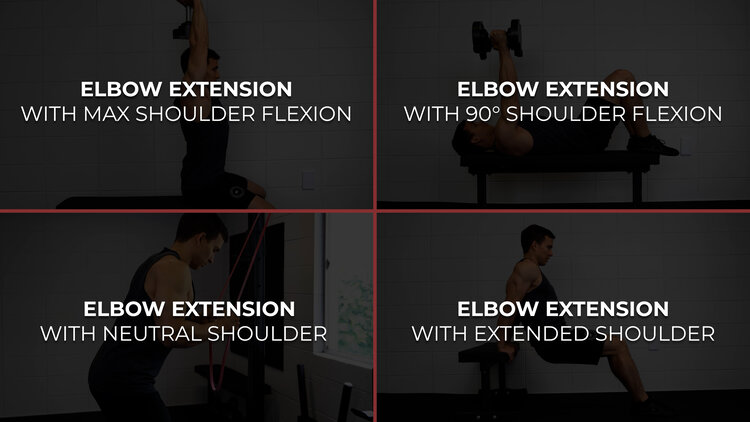

While the multi-joint exercises are optional depending on your goals, picking 1-2 single-joint exercises to perform will be necessary to ensure appropriate loading of the triceps. Just like the compound exercises though, you can try to find a variation that works for you.
I’d try to implement a very strict, consistent technique with that same tempo initially for 1-2 exercises. For example, a dumbbell skull crusher can be done with shoulders maintained at 90 degrees of flexion, no shoulder internal or external rotation, bringing the weight to 90 degrees of elbow flexion, and then straightening the arms. A similar technique could be used for a standing triceps pressdown with a rope, bar, or band. I’d highly recommend executing these one arm at a time.
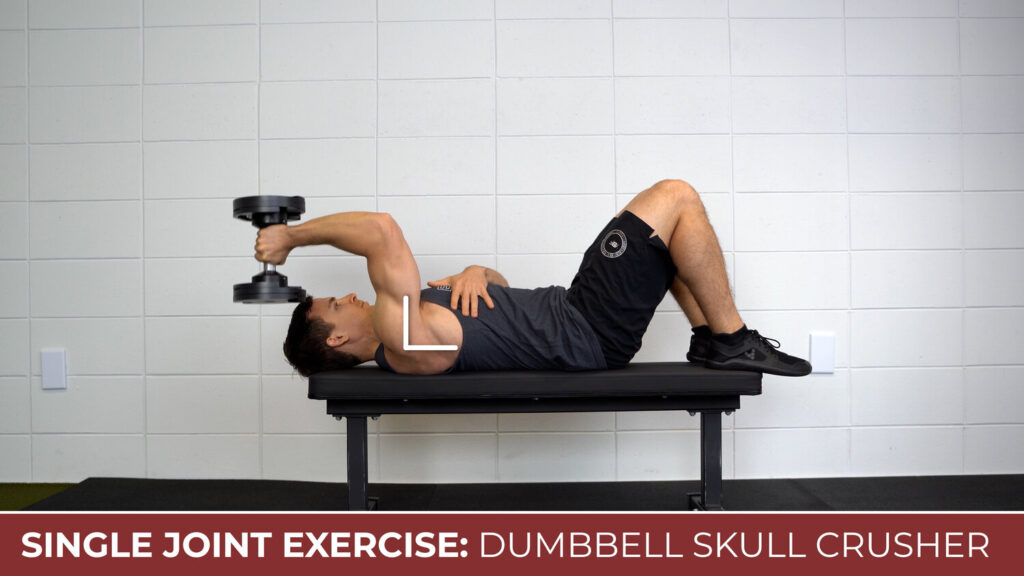
These would be done for 3-5 sets of 6-12 repetitions, 2-3x per week at 3/10 pain or less at an intensity that is close to failure. I’ll give a sample routine at the end of the blog.
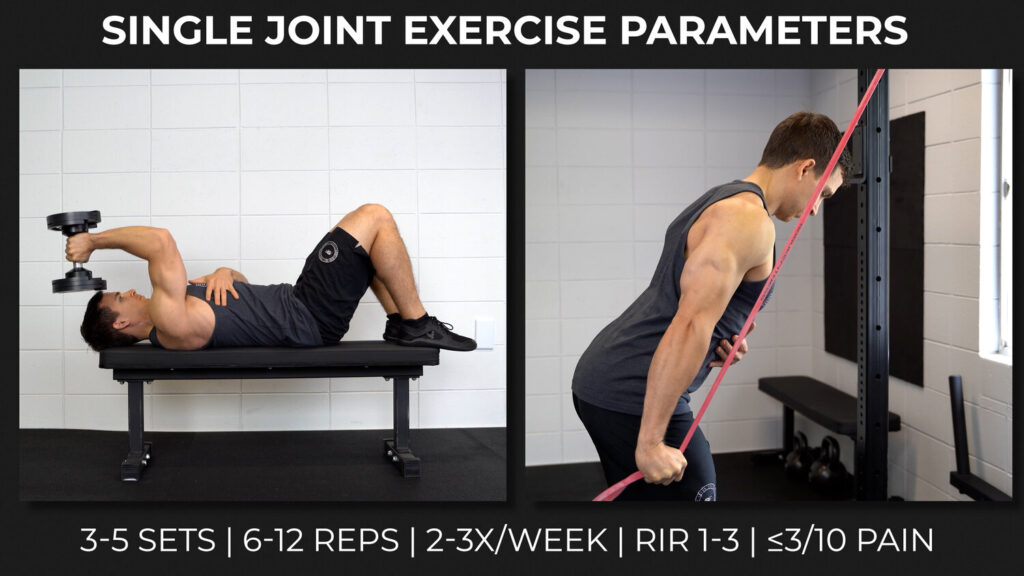
Accessory Exercises for Triceps Tendinopathy
Lastly – accessory exercises. There is no research to support this for triceps tendinopathy, but other elbow issues benefit from strengthening of the shoulder. Therefore, I would expect the same here, especially since the long head of the triceps also moves and stabilizes the shoulder. I’m going to pick three options:
- Supine shoulder flexion with a dumbbell while trying to keep the elbow straight and low back flat against the ground or bench. This movement will strengthen the shoulder extensors, including the long head of the triceps, in a lengthened position while also improving your shoulder flexion range of motion which may transfer well to something like an overhead triceps extension. 3 sets of 6-8 reps with a slow tempo to emphasize the eccentric portion of the movement is a good place to start.
- Strengthening the shoulder extensors in a shortened position. This can be done with a straight arm banded pulldown or in a prone position with the hands behind the back. The banded movement may have some carryover to a standing triceps pressdown while the prone variation may carry over to something like a dip by improving your shoulder extension range of motion. I’d aim for 3 sets of 30-45 second holds.
- Lastly, it never hurts to include direct rotational work. You can perform knee supported external rotation with a slow tempo for 3 sets of 10-15 reps to improve your shoulder external rotation strength, as well as your shoulder internal rotation range of motion.
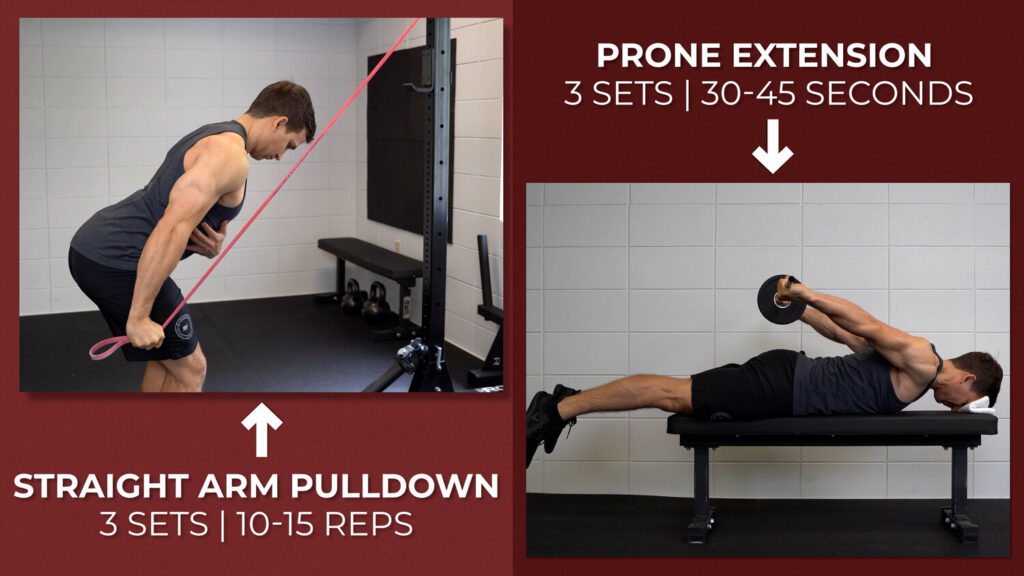
You don’t necessarily have to do all of them. You can pick 1-3 exercises to perform 2-3 times per week that support your goals.
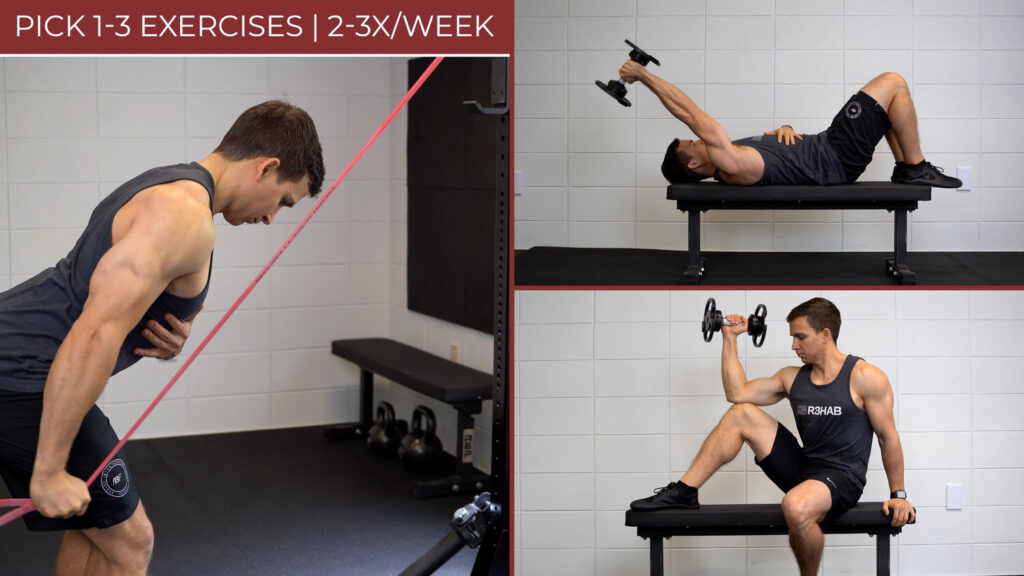
For example, you might notice a deficit in range of motion or strength on your affected side that you want to specifically target.
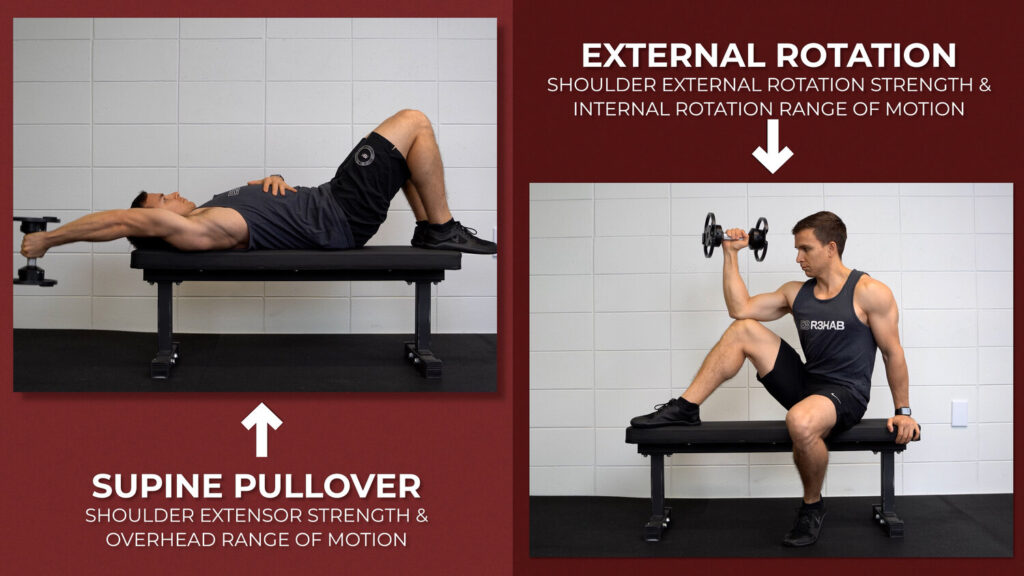
Other Treatment
What about massage, foam rolling, stretching, etc? If you like those things, they feel good, and they aren’t taking away from the progress of your resistance training or causing flare ups, go for it. Otherwise, I’m indifferent.
Triceps Tendinopathy Summary
Triceps tendinopathy largely comes down to a load management issue. The first thing you want to do is identify if you’ve had significant changes in volume, intensity, and/or frequency within your training over the past few weeks or months. If so, try to modify those variables first.
Next, address your compound exercises. Try to find options that are comfortable for you. If that’s not possible, modify the technique to decrease the demand on the triceps and use a slower tempo.
Finally, you want to implement isolation exercises to ensure appropriate loading of the triceps while also incorporating some shoulder accessory work to potentially support the area.
I can’t provide a specific program that’s going to work for everyone reading this blog because you’ll have different training histories, goals, chronicity and severity of symptoms, etc., but a very general layout using an upper/lower split might look like this:
- Monday and Thursday are leg days.
- Tuesday and Friday are upper body days.
- During those upper body days, you might start with 2-4 compound pushing and pulling exercises for 3-4 sets each. Then you may move on to single joint exercises like bicep curls and standing tricep pushdowns for 3-5 sets of 6-12 reps. Finally, you might end with something like the supine shoulder flexion for 3 sets of 6-8 reps.
- Wednesday and Saturday are rest days, and Sunday is an optional day to do another triceps exercise and accessory exercise.

Some points before I finish the blog:
- Expect the process to take at least 3 months, if not longer.
- Expect there to be some ups and downs, but understand that occasional flare-ups don’t necessarily mean you’re damaging anything – just adapt the programming as needed.
- Be patient. Focus on improving function in the form of increased sets, reps, and/or weight rather than only gauging progress based on symptoms.
- You can continue doing other activities or sports that you like to do as long as they’re not hindering progress.
- Finally, a lot of these suggestions are not meant to be permanent. You don’t necessarily have to incorporate a specific tempo, accessory exercise, or a super rigid technique for the rest of your life.
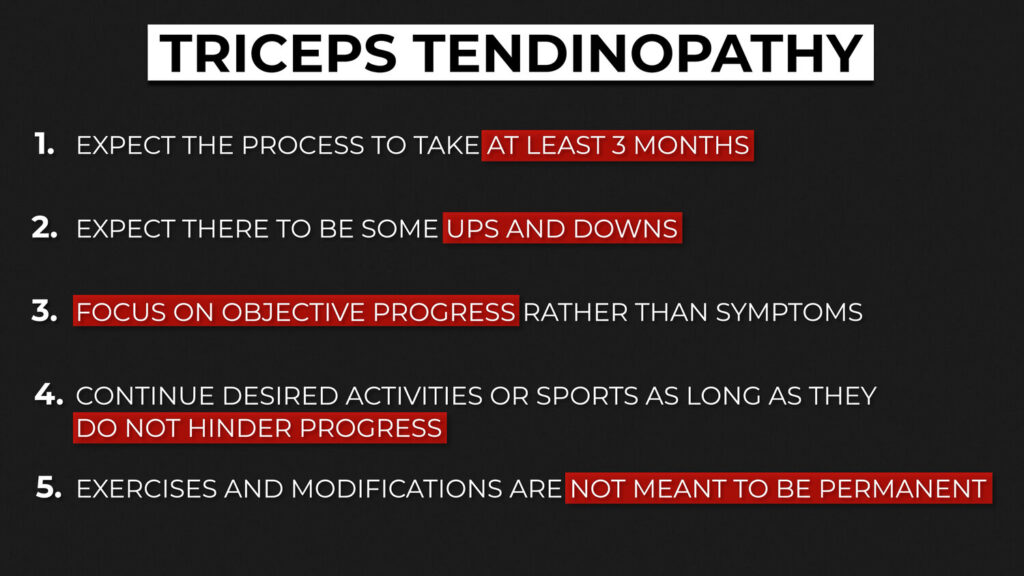
Looking for rehab or performance programs? Check out our store here!
Want to learn more? Check out some of our other similar blogs:
Golfer’s Elbow, Improving Elbow Range of Motion, Push Up Modifications
Thanks for reading. Check out the video and please leave any questions or comments below.


